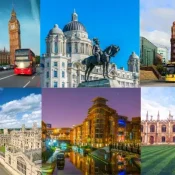
Vietnam travel
Vietnam travel
Discover the breathtaking beauty of three natural wonders in Vietnam such as the Mu Cang Chai rice terraces, the breathtaking beauty of Ha Long Bay and the world’s largest cave Son Doong. Vietnam landscapes are rich of mountains that hug the clouds and white sand beaches and turquoise water to black rock forests.
There are plenty of tourist attractions in Vietnam but we will cover 3 special spots that are unreal in terms of natural beauty. There are many Vietnam city to be explored but these 3 are wonders.
Mu Cang Chai rice terraces
Discover the breathtaking beauty of the Mu Cang Chai rice terraces in Vietnam. Discover the traditional farming techniques used to cultivate these stunning landscapes and explore the cultural significance of rice cultivation in this region with the rolling hills and lush green fields of Mu Cang Chai which is one of the most spectacular sights in Asia.
Mu Cang Chai is a rural district in the Yen Bai province of northern Vietnam. It’s renowned for its stunning landscapes, particularly its terraced rice fields. The terraces in Mu Cang Chai are not only breathtakingly beautiful but also serve as an essential part of the local ethnic minorities’ agricultural practices.
As you embark on your journey, you’ll be greeted by the mesmerizing sight of terraced rice fields cascading down the hillsides like giant steps. These intricate terraces have been meticulously carved into the landscape over centuries by the local ethnic minority communities, including the H’mong, Thai, and Dao people.
The traditional farming techniques used in Mu Cang Chai are a testament to the ingenuity and resilience of the local farmers. With limited access to modern agricultural machinery, they rely on ancient methods passed down through generations to cultivate the land. Hand tools and water buffalo are still commonly used to plow the fields, while rice seedlings are painstakingly transplanted by hand.
But it’s not just the farming techniques that make Mu Cang Chai special – it’s also the cultural significance of rice cultivation in this region. Rice is not just a crop here; it’s a way of life. It forms the backbone of the local economy and plays a central role in the cultural identity of the communities living in Mu Cang Chai.
For the people of Mu Cang Chai, rice is more than just food – it’s a symbol of prosperity, fertility, and abundance. Every year, as the rice paddies fill with water during the rainy season, the landscape is transformed into a sea of green, reflecting the sky above in a breathtaking display of natural beauty.
Whether you’re a nature lover, a photography enthusiast, or simply seeking a deeper connection with the land, Mu Cang Chai offers an unforgettable experience that will leave you awestruck by the sheer beauty of nature and the resilience of the human spirit.
Here’s some more information about the Mu Cang Chai rice terraces:
- Scenic Beauty: The terraced rice fields of Mu Cang Chai are known for their picturesque beauty, especially during the rice-growing season. The landscape transforms into a vibrant green canvas as the terraces fill with water and young rice plants.
- Cultural Significance: The terraced rice fields in Mu Cang Chai are not only a natural wonder but also a reflection of the local ethnic minority communities’ ingenuity and agricultural traditions. The H’mong, Thai, and Dao ethnic groups have been cultivating rice on these terraces for generations, using traditional farming methods passed down through families.
- UNESCO Recognition: While the Mu Cang Chai terraces have not been officially designated as a UNESCO World Heritage Site, they are often considered as part of the broader recognition of the cultural landscape of rice terraces in Vietnam. The Hoang Lien Son range, where Mu Cang Chai is located, is part of the tentative list for UNESCO consideration.
- Tourism: Mu Cang Chai has become an increasingly popular tourist destination, attracting visitors who come to admire the natural beauty of the terraced rice fields. Tourists can enjoy activities such as hiking, photography tours, and interacting with local communities to learn about their way of life and agricultural practices.
- Seasonal Variations: The appearance of the Mu Cang Chai rice terraces varies depending on the season. The most spectacular views are typically seen during the rice-growing season, which spans from May to October. During this time, the terraces are filled with water, creating stunning reflections of the sky and surrounding landscape.
Overall, the Mu Cang Chai rice terraces are not only a breathtaking natural spectacle but also a testament to the rich cultural heritage and sustainable agricultural practices of the local ethnic minority communities in northern Vietnam.
Ha Long Bay
Welcome to the breathtaking beauty of Ha Long Bay, a UNESCO World Heritage Site located in Vietnam’s Quang Ninh Province. Ha Long Bay, which means “Descending Dragon Bay” in Vietnamese, is renowned for its stunning limestone karst formations, emerald waters, and rich biodiversity.
As you set sail on the calm waters of Ha Long Bay, you’ll be greeted by a landscape straight out of a fairy tale. Thousands of limestone pillars and islets rise dramatically from the sea, creating a surreal and otherworldly panorama that has captivated travelers for centuries. These karst formations have been sculpted by millions of years of geological processes, resulting in a landscape that is both awe-inspiring and unique.
One of the highlights of exploring Ha Long Bay is cruising through its maze-like network of waterways and caves. Hop aboard a traditional junk boat and glide past towering limestone cliffs, hidden lagoons, and secluded beaches. Marvel at the natural arches and caves that dot the coastline, each with its own intriguing history and legend.
But Ha Long Bay isn’t just about its natural beauty – it’s also a treasure trove of biodiversity. The bay is home to a diverse array of flora and fauna, including rare species of plants, birds, and marine life. Keep your eyes peeled for monkeys swinging through the trees, colorful coral reefs teeming with fish, and elusive sea creatures like the dugong and the endangered Indo-Pacific humpback dolphin.
As you explore Ha Long Bay, you’ll also have the opportunity to immerse yourself in the local culture and history. Visit floating fishing villages, where traditional ways of life have remained largely unchanged for generations.
For those seeking relaxation, Ha Long Bay offers plenty of opportunities to unwind and recharge. Spend your days sunbathing on pristine beaches, kayaking through tranquil waters, or simply soaking in the stunning views from the deck of your boat. As the sun sets over the horizon, sit back and savor the tranquility of this magical place.
Whether you’re drawn to its natural beauty, rich biodiversity, or cultural heritage, Ha Long Bay promises an unforgettable experience that will leave you enchanted and inspired.
Ha Long Bay, located in the Quang Ninh Province of Vietnam, is a UNESCO World Heritage Site and one of the country’s most iconic natural wonders. Its name translates to “Descending Dragon Bay” in Vietnamese folklore.
Here’s an exploration of this breathtaking destination:
- Geological Marvels: Ha Long Bay is famous for its stunning landscape of limestone karsts and isles, rising dramatically from the emerald waters of the Gulf of Tonkin. These karst formations have been shaped over millions of years by the erosive forces of wind and water, creating a labyrinth of over 1,600 islands and islets.
- Spectacular Scenery: The bay’s towering limestone pillars, topped with lush vegetation, form a spectacular backdrop for exploration. Visitors can cruise through the bay on traditional junk boats or kayaks, marveling at the maze of cliffs, caves, and hidden lagoons along the way.
- Cultural Heritage: Ha Long Bay is not only a natural wonder but also steeped in history and culture. It has been inhabited by various indigenous communities for thousands of years, and evidence of ancient human presence, including prehistoric tools and shell middens, has been discovered in the area.
- Rich Biodiversity: The bay is home to a diverse ecosystem, with hundreds of plant and animal species, many of which are endemic to the region. Visitors can spot wildlife such as monkeys, lizards, and rare bird species while exploring the islands and caves of Ha Long Bay.
- Cave Exploration: Ha Long Bay is dotted with numerous caves and grottoes, each with its own unique features and formations. Some of the most popular caves to explore include Thien Cung Cave, Sung Sot Cave, and Dau Go Cave, where visitors can admire intricate stalactites and stalagmites.
- Outdoor Activities: In addition to cruising and cave exploration, Ha Long Bay offers a range of outdoor activities for adventure enthusiasts. Visitors can go swimming, snorkeling, rock climbing, or hiking on some of the larger islands, such as Cat Ba Island.
- Sunset Magic: One of the most enchanting experiences in Ha Long Bay is watching the sunset over the karst formations, painting the sky with hues of orange and pink. It’s a magical moment that captures the timeless beauty and tranquility of this UNESCO World Heritage Site.
Ha Long Bay is a destination that captivates visitors with its natural beauty, cultural heritage, and serene atmosphere. Whether you’re seeking adventure or relaxation, this iconic destination offers an unforgettable experience that will leave you in awe of its magnificence.
Son Doong
Son Doong is the the world’s largest cave, located in the heart of the Phong Nha-Ke Bang National Park in Vietnam. Prepare to embark on an unforgettable adventure as we explore the wonders of this breathtaking natural marvel. Discover its breathtaking beauty, unique geological features, and rich biodiversity on this unforgettable adventure.
Here’s some more information about Son Doong
- Unrivaled Size: Son Doong Cave is a colossal underground wonder, stretching over 9 kilometers (5.6 miles) in length, with sections reaching up to 200 meters (656 feet) in height and 150 meters (492 feet) in width. Its sheer size dwarfs all other known caves, making it a truly awe-inspiring spectacle.
- Unique Geological Features: As we venture deeper into Son Doong, prepare to be mesmerized by its unique geological formations. Marvel at towering stalagmites and stalactites, formed over millions of years by the slow drip of mineral-rich water. Encounter vast underground rivers, turquoise pools, and surreal limestone formations that defy imagination.
- Enchanting Biodiversity: Despite its subterranean location, Son Doong is teeming with life. The cave harbors a rich biodiversity, with unique species of flora and fauna adapted to its dark and humid environment. Keep an eye out for rare cave-dwelling creatures such as blind fish, cave crickets, and albino shrimp as we explore the cave’s hidden corners.
- Majestic Chambers: Son Doong is home to several majestic chambers that leave visitors in awe of their grandeur. One of the most famous is the “Hand of Dog” chamber, named for its resemblance to a giant dog’s pawprint. Other notable chambers include the “Watch Out for Dinosaurs” chamber, with its towering limestone columns, and the “Garden of Edam” chamber, adorned with lush vegetation.
- Challenging Expedition: Exploring Son Doong is not for the faint of heart. The journey to reach the cave involves trekking through dense jungle, crossing rivers, and navigating rugged terrain. Once inside, adventurers must traverse rocky passages, wade through underground rivers, and scale steep cliffs. But for those willing to take on the challenge, the rewards are boundless.
- Conservation Efforts: Due to its fragile ecosystem and unique biodiversity, Son Doong Cave is carefully protected by conservation efforts aimed at preserving its natural beauty for future generations. Visitors must adhere to strict guidelines to minimize their impact on the cave’s delicate environment.
- Unforgettable Experience: As we emerge from the depths of Son Doong Cave, we are left with memories that will last a lifetime. The sheer scale and beauty of this underground world leave an indelible impression, reminding us of the wonders that lie beneath the surface of our planet.
Travel to Vietnam and explore the wonders of Son Doong, the world’s largest cave, and uncover the secrets hidden within its ancient chambers.
Vietnam weather is great during the months of
November and April and best time to visit Vietnam.




